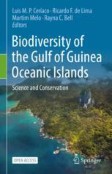Search
Search Results
-
What Is Evolutionary Biogeography?
Most of the authors involved in the theoretical development of evolutionary biogeography assume that dispersalism, panbiogeography, cladistic...
-
The geographical origin, refugia, and diversification of honey bees (Apis spp.) based on biogeography and niche modeling
An understanding of the origin and formation of biodiversity and distribution patterns can provide a theoretical foundation for biodiversity...

-
Characterization of the fungal genus Sphaerellopsis associated with rust fungi: species diversity, host-specificity, biogeography, and in-vitro mycoparasitic events of S. macroconidialis on the southern corn rust, Puccinia polysora
Sphaerellopsis species are putative hyperparasites of rust fungi and may be promising biological control agents (BCA) of rust diseases. However, few...

-
Island biogeography of soil bacteria and fungi: similar patterns, but different mechanisms
Microbes, similar to plants and animals, exhibit biogeographic patterns. However, in contrast with the considerable knowledge on the island...

-
Biogeography of marine giant viruses reveals their interplay with eukaryotes and ecological functions
Nucleocytoplasmic large DNA viruses (NCLDVs) are ubiquitous in marine environments and infect diverse eukaryotes. However, little is known about...

-
Phylogeny, Classification, Biogeography, and Evolution
Phylogenetic reconstruction based on limited sequence variations and taxon sampling always result in significant phylogenetic errors, particularly in...
-
Biogeography and Evolution in the Oceanic Islands of the Gulf of Guinea
As with most archipelagos, geography played a central role in the assembly and evolution of the endemic-rich biological communities of the Gulf of...
-
Neotectonics and Australian Biogeography
Australia is the flattest continent on Earth and has a wide range of different landforms, making it an ideal place to investigate the impact of...
-
Mammals of the Pernambuco Endemism Center: Diversity, Biogeography, Research Gaps, and Conservation Concerns
We present an overview of the mammal fauna in the Pernambuco Endemism Center (PEC), addressing diversity and biogeographic patterns, collection...
-
Biogeography of endosymbionts (Symbiodiniaceae) associated with zoantharian species (Hexacorallia: Anthozoa) from the Macaronesia and Cape Verde ecoregions
Populations of some zoantharian species (Cnidaria: Anthozoa) have been able to proliferate in locations where abiotic conditions hinder scleractinian...

-
Biogeography of New World Tarantulas
Biogeography is a multidisciplinary field that is concerned with delimiting and explaining the geographic distributions of organisms in space and...
-
The biology of an isolated Mashona mole-rat population from southern Malawi, with implications for the diversity and biogeography of the genus Fukomys
The Mashona mole-rat, Fukomys darlingi (Thomas,
1895 ), is a little studied social African mole-rat (Bathyergidae) from south-astern Africa. Here, we...
-
Conservation Biogeography of Living American Marsupials: Didelphimorphia, Microbiotheria, and Paucituberculata
Living American marsupials comprise ca. 130 species included in three orders, extending from northern North America (Canada–US border) to southern...
-
Evolutionary biogeography of the freshwater fish family Anablepidae (Teleostei: Cyprinodontiformes), a marine-derived Neotropical lineage
Cladistic biogeography is an evolutionary biogeographic approach that infers area relationships by comparing area cladograms derived from different...

-
Historical Biogeography of the Neotropical Miconieae (Melastomataceae) Reveals a Pattern of Progressive Colonization Out of Lowland South America
The Neotropics harbor over a third of all known seed plant species, and their distribution is not homogenous. Understanding how this diversity arose...
-
Evolution and biogeography of the Zanclea-Scleractinia symbiosis
Scleractinian corals provide habitats for a broad variety of cryptofauna, which in turn may contribute to the overall functioning of coral symbiomes....

-
The evolutionary history of Fouquieriaceae (Ericales): biogeography, growth habit, habitat colonization, and chromosome evolution
Fouquieriaceae consists of a single genus Fouquieria with eleven species occurring in arid and semiarid regions in Mexico and the southwestern USA. A...

